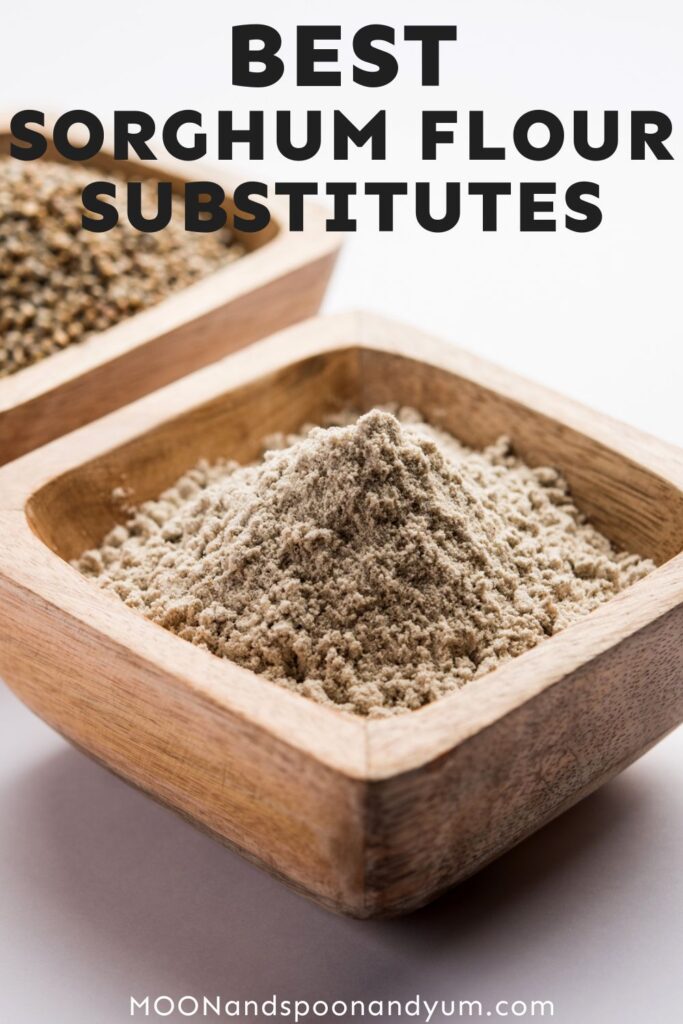Top 13 Sorghum Flour Substitutes
If you’re into baking, you might know about sorghum flour. But sometimes, it’s tough to find in stores. If you’re stuck without it, don’t stress. There’s a variety of sorghum flour substitutes you can use instead.
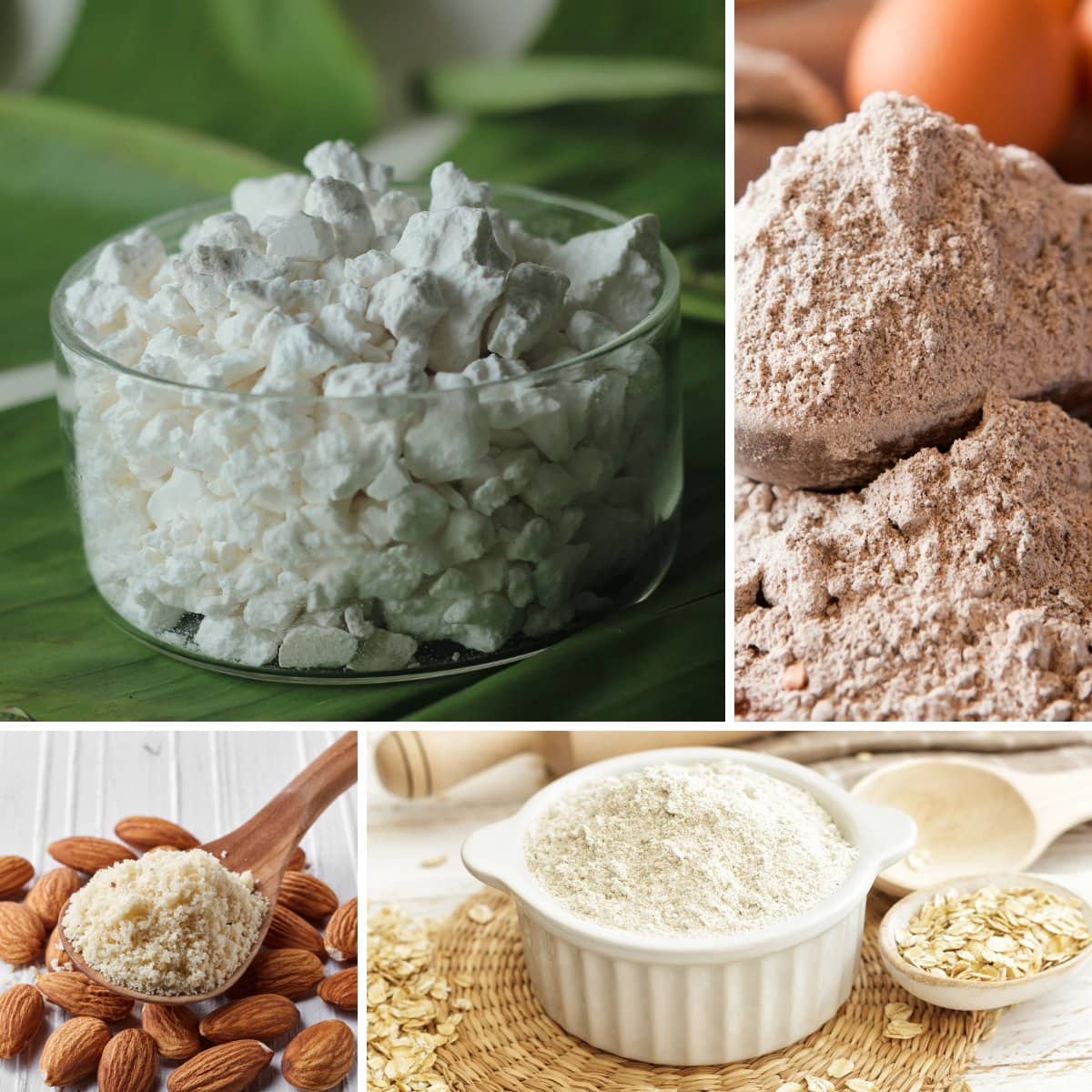
In this post, we’re going to talk about the best substitutes for sorghum flour that work just as well. We list the top 13 swaps including millet flour, coconut flour, chickpea flour, and more.
What is Sorghum Flour?
Sorghum flour comes from the sorghum grain, which is similar to millet. It’s a popular choice for gluten-free baking because it’s naturally free of gluten.
Sorghum flour is used in various recipes, including bread, cookies, cakes, and even pizza dough. It’s got a light texture and a mild taste, which doesn’t overpower other flavors in your baking. It’s also packed with nutrients like fiber, protein, and essential minerals. This makes it not just a gluten-free alternative, but a healthy one too.
Sorghum Flour Substitutes
1. Millet Flour
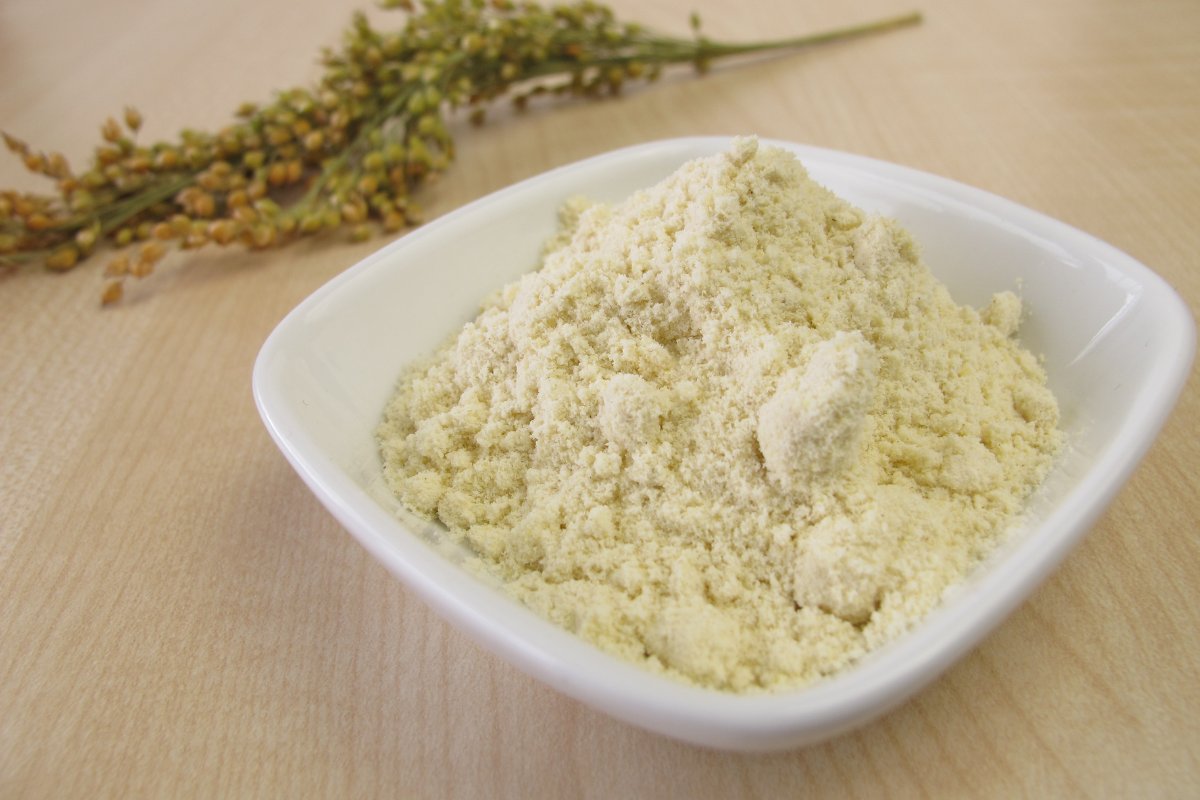
Millet flour is made by grinding millet grain into a fine powder. It’s another gluten-free option that’s gaining popularity in baking. Millet flour has a mild and slightly sweet flavor. It’s light in color and has a delicate texture, which can add a nice crumb to your baked goods.
When it comes to nutrition, millet flour is a powerhouse. It’s rich in vitamins and minerals like magnesium, potassium, and zinc. It’s also a good source of fiber and protein.
As a sorghum flour substitute, millet flour can usually be used in a 1:1 ratio. However, because it’s gluten-free, you might need to combine it with a binder like xanthan gum or eggs to help your baked goods hold together better.
2. Amaranth Flour
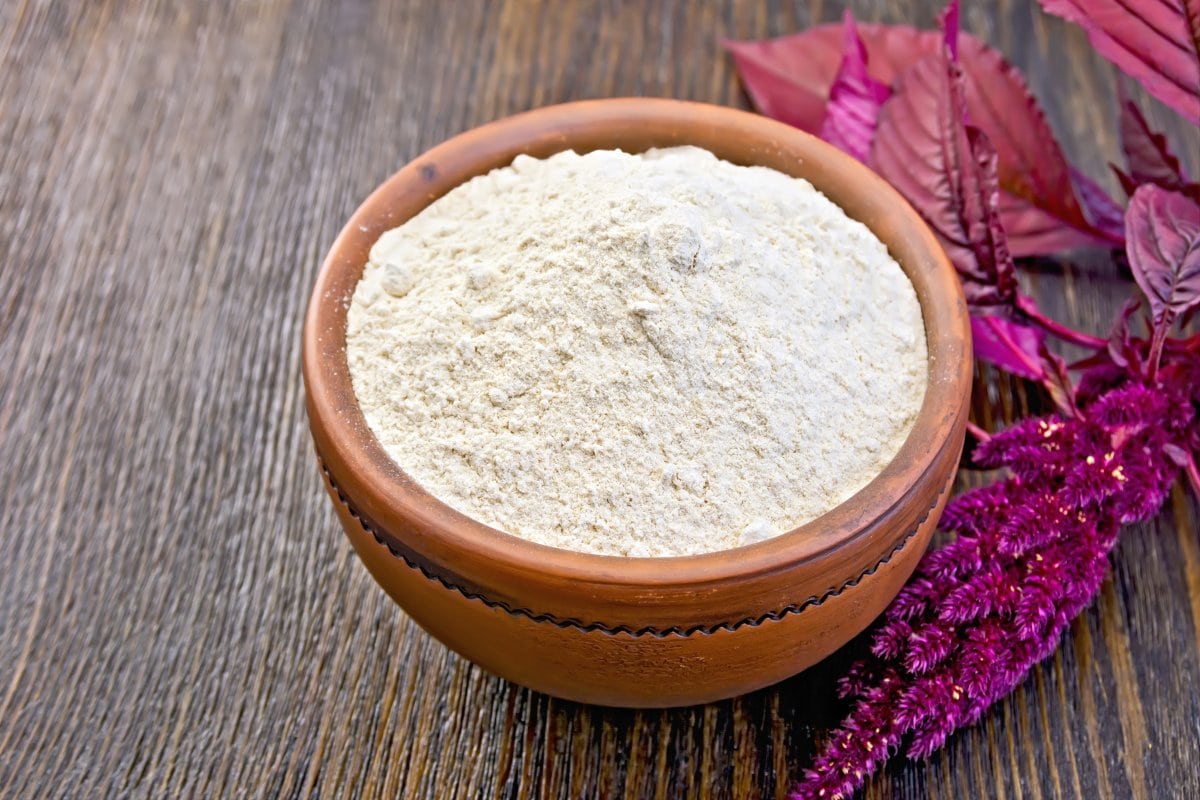
Amaranth flour is a gluten-free flour made from the ground seeds of the amaranth plant. It’s a great alternative to sorghum flour because it has a similar nutty flavor and works well in a variety of baked goods.
Amaranth flour is known for its high protein content and is packed with essential amino acids, making it more nutritious than many other flours. This flour also contains a good amount of fiber and important minerals like calcium, iron, and magnesium.
When substituting amaranth flour for sorghum flour, amaranth can absorb more liquid and is a bit denser. Start by replacing half of the sorghum flour with amaranth flour and then adjust the ratio as needed. Add more liquid to your recipe to achieve the desired consistency.
3. Coconut Flour
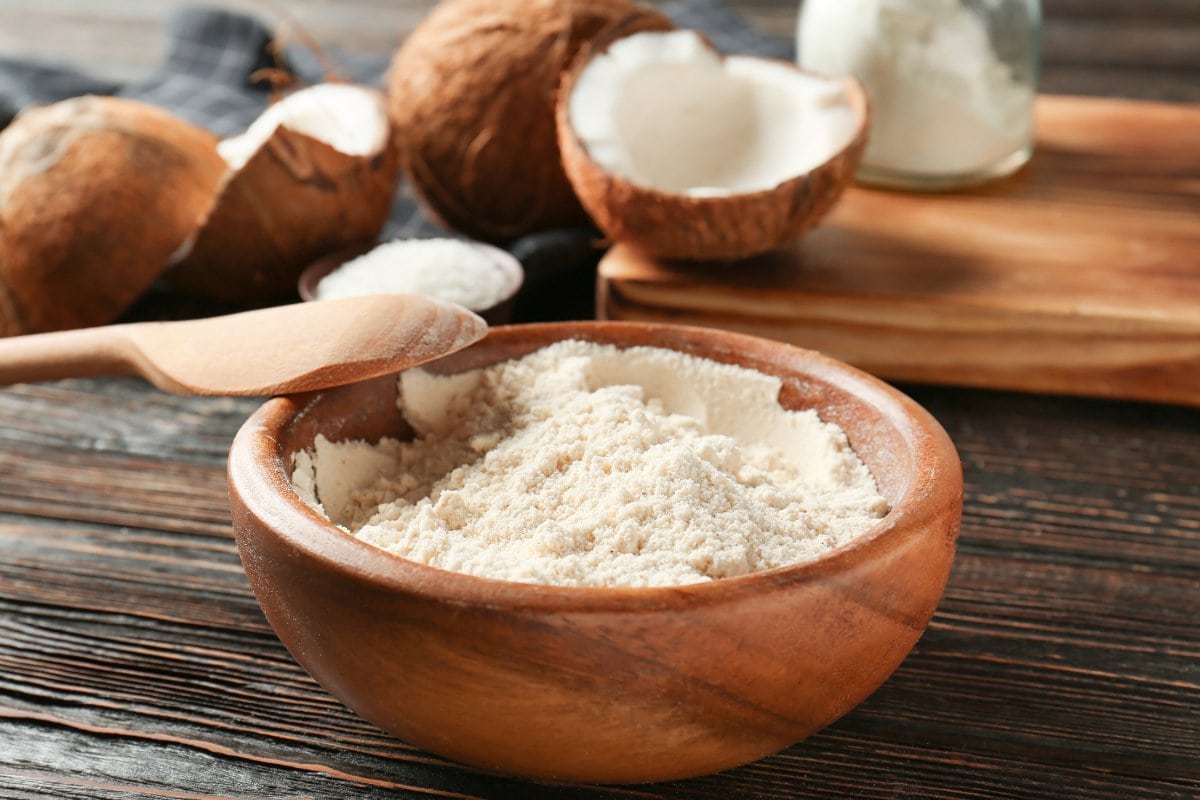
Coconut flour is a soft flour made from dried and ground coconut meat. It’s a popular gluten-free, low-carb alternative to traditional grain-based flour. Coconut flour is high in fiber, protein, and healthy fats.
One of the standout features of coconut flour is its absorbency. It soaks up a lot of liquid, which means you’ll need to adjust the amount of liquid in your recipes when using it as a substitute for sorghum flour.
Typically, a good rule of thumb is to use about 1/4 cup of coconut flour for every 1 cup of sorghum flour. Additionally, because of its high fiber content, you may need to increase the number of eggs or other binding agents to maintain the structure of your baked goods.
4. Buckwheat Flour
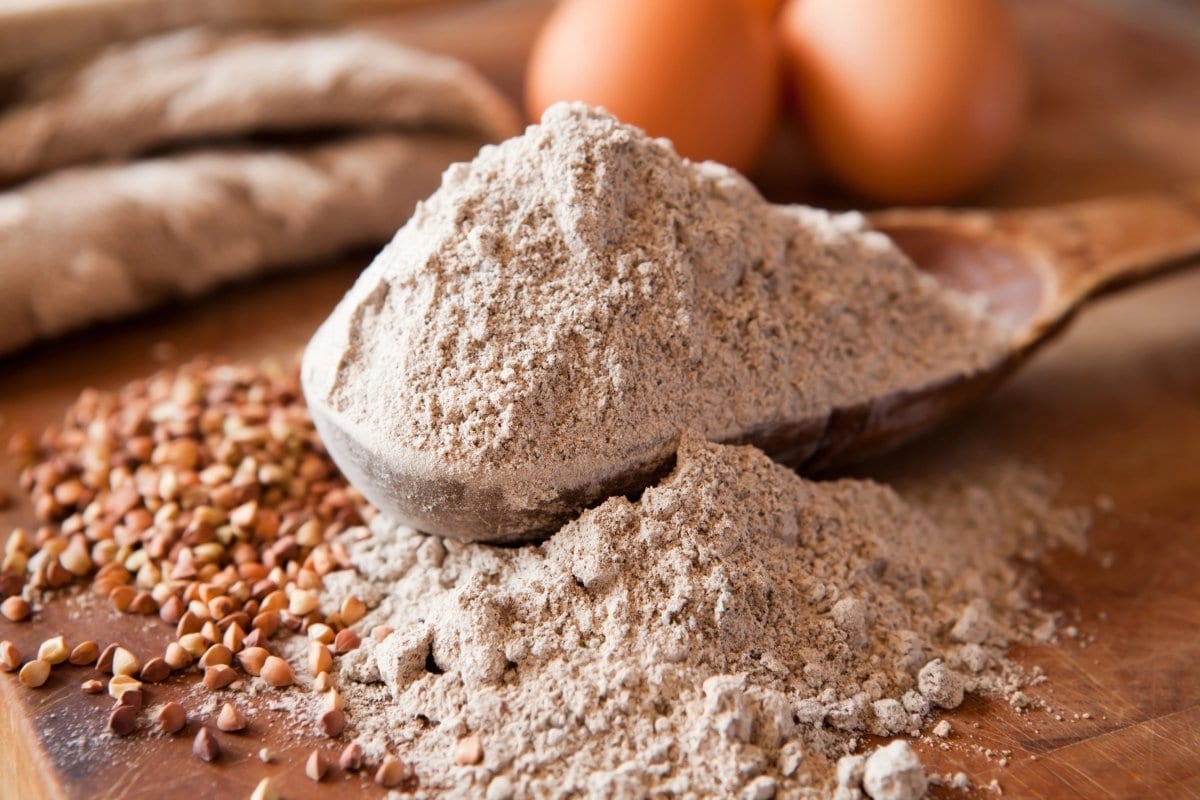
Buckwheat flour is a nutrient-dense, gluten-free flour made from the ground seeds of the buckwheat plant. It’s a fantastic substitute for sorghum flour due to its nutritional benefits and versatility in recipes. Buckwheat flour is packed with protein, fiber, and minerals like magnesium, zinc, and iron.
The flour is known for its robust, earthy, and nutty flavor. Its texture is somewhat heavier and can lead to denser products. It’s especially good in recipes that can handle a little heft, like pancakes and quick breads.
When using buckwheat flour as a sorghum flour substitute, you can typically use it in a 1:1 ratio, but since it can impart a stronger taste, you might want to start with a smaller amount and adjust to your preference. Remember to consider the moisture balance in your recipe, as you may need to tweak the liquid ingredients to achieve the right consistency.
5. Rice Flour

Rice flour is a fine, gluten-free powder made from ground rice. It’s prized for its versatility and can be found in both white and brown rice varieties.
White rice flour, derived from polished rice, has a light and fluffy texture, making it an excellent choice for fine pastries and sauces. On the other hand, brown rice flour, which includes the bran and germ of the rice grain, has a denser texture and a richer, nuttier flavor suitable for heartier baked goods like whole-grain bread.
While rice flour doesn’t impart a strong taste, it can sometimes create a gritty texture in finished dishes. Opting for stone-ground rice flour can help achieve a finer, smoother consistency. Blending rice flour with other gluten-free flour is also beneficial for improving both the texture and nutritional content of your recipes.
When substituting rice flour for sorghum flour, consider the absorbency differences. Rice flour can produce a drier result, so you may need to adjust the amount of liquid in the recipe. A general starting point for substitution is a 1:1 ratio. Tweak the recipe based on the specific requirements of your dish and the desired outcome.
6. Potato Flour
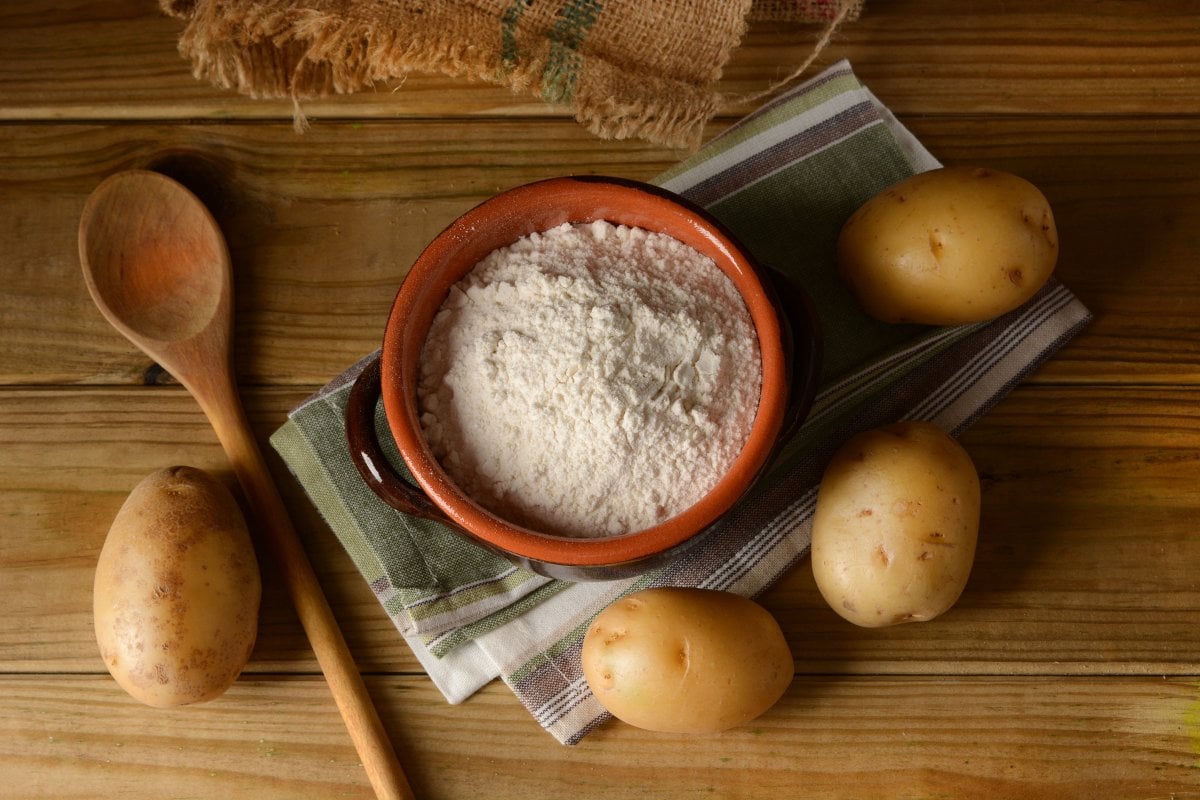
Potato flour, not to be confused with potato starch, is a gluten-free flour made from whole-cooked, dried, and ground potatoes. It’s a nutritious alternative to traditional flours and can be used as a substitute for sorghum flour in various recipes.
Potato flour can provide similar binding properties and moisture retention as sorghum flour. However, due to its heavier density and greater absorbency, you should start by using about 3/4 cup of potato flour for every 1 cup of sorghum flour. Adjustments to the recipe’s liquid content may be necessary to achieve the desired consistency. Potato flour can make doughs and batters stickier than those made with sorghum flour.
This type of flour is rich in fiber and offers a good source of vitamins and minerals, such as vitamin C and potassium. Potato flour has a unique ability to retain moisture, which can lead to a tender crumb in baked goods. It also imparts a subtle earthy flavor that complements both sweet and savory dishes.
It has a high starch content and it can act as a thickener, which is particularly useful in soups, sauces, and gravies. When used in baking, it can help create moist yeast bread.
7. Almond Flour
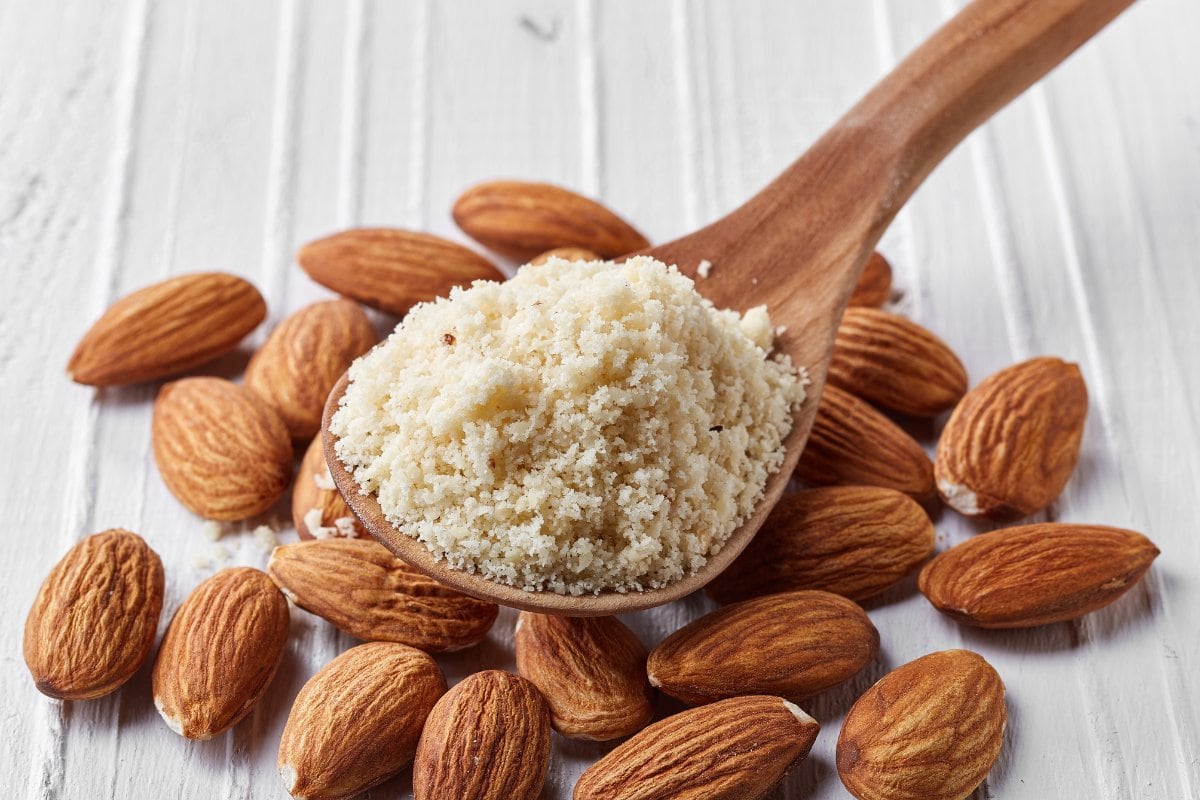
Almond flour is a gluten-free and grain-free flour made from blanched and finely ground almonds. It’s a nutritious substitute for sorghum flour, particularly popular in low-carbohydrate, paleo, and gluten-free baking.
Almond flour does not absorb liquids as grain-based flours do. So when substituting almond flour for sorghum flour, a general guideline is to start with a 1:1 substitution and adjust as needed. You may need more binding agents, such as eggs, due to the lack of gluten in almond flour. This will affect the structure and texture of the final product.
Almond flour is rich in protein, healthy fats, particularly monounsaturated fats, and dietary fiber, as well as vitamins and minerals like vitamin E and magnesium. It has a sweet, nutty flavor and a moist texture that can add richness to baked goods. Due to its high-fat content, almond flour can help to make baked goods, like these cookies, more tender and moist.
8. Oat Flour
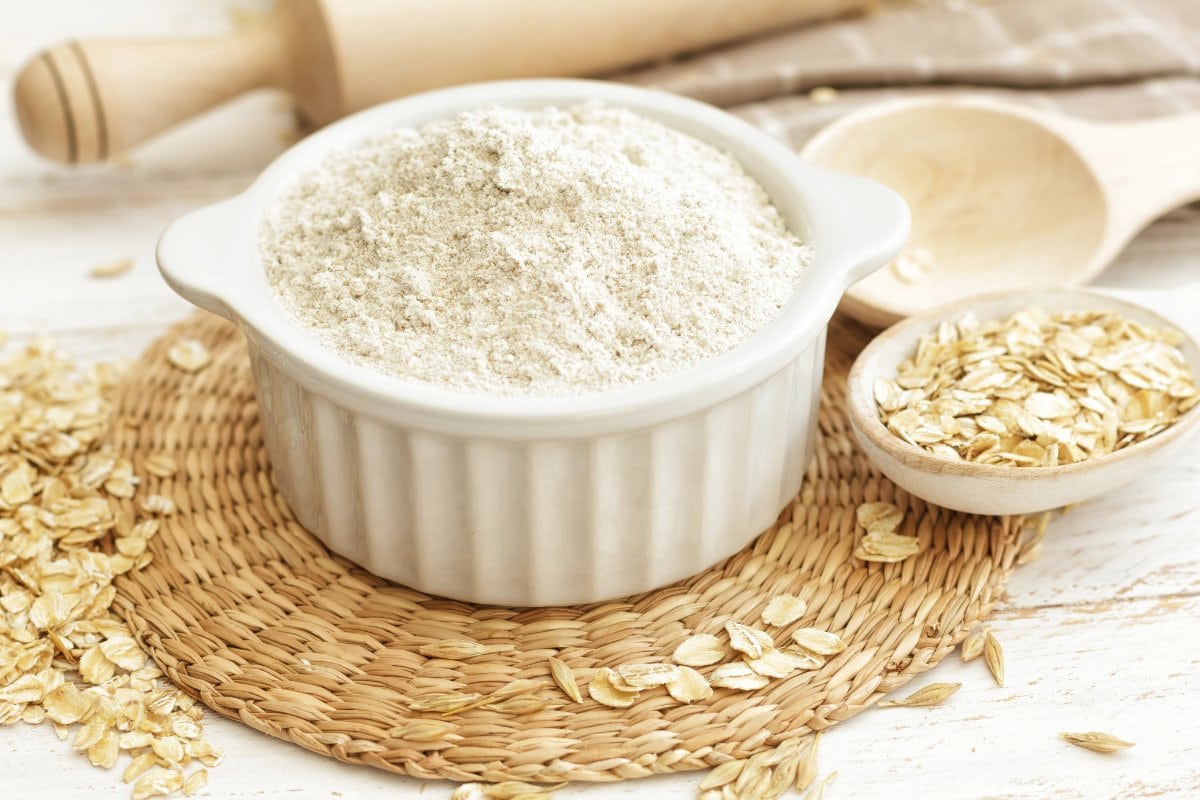
Oat flour is a whole-grain flour made from ground oats. It’s a gluten-free alternative to traditional wheat flour and a good substitute for sorghum flour in many recipes.
Oat flour has a mild, slightly sweet flavor, which makes it versatile for both sweet and savory dishes. It contains a soluble fiber called beta-glucan, which is beneficial for heart health and can help to provide a feeling of fullness. Oat flour also tends to lend a chewy and moist texture to baked goods, which is similar to the texture that sorghum flour provides.
Oat flour can be substituted for sorghum flour typically in a 1:1 ratio by weight. However, because oat flour can sometimes produce a denser final product, you might need to adjust the amount of leavening agents in the recipe to ensure proper rise. Additionally, oat flour can absorb more liquid than sorghum flour, so you may need to increase the liquid ingredients slightly to achieve the desired consistency.
While oats are naturally gluten-free, they can sometimes be processed in facilities that handle gluten-containing grains. This can lead to cross-contamination. For those with celiac disease or a serious gluten intolerance, use oat flour that is certified gluten-free.
9. Chickpea Flour

Chickpea flour, also known as gram or garbanzo flour, is a gluten-free flour made from ground chickpeas. It’s known for its versatility and health benefits. It stands out as a good sorghum flour substitute due to its similar binding properties and protein content, which can add structure and a mild, nutty flavor to recipes.
Chickpea flour has a fine texture and rich, earthy taste. It’s particularly popular in gluten-free and grain-free baking, as well as in many traditional Indian and Middle Eastern dishes. Chickpea flour is dense and has a strong ability to absorb liquids, which can be beneficial in recipes that require a firmer texture.
When substituting chickpea flour for sorghum flour, you may want to begin with a 1:1 ratio by volume and adjust as needed, considering the moisture content of your recipe. Due to its dense nature, you might find that using slightly less chickpea flour than sorghum flour works better to prevent your baked goods from becoming too heavy.
10. Quinoa Flour

Quinoa flour is a fine, gluten-free flour ground from quinoa seeds. It’s known for its complete protein profile, containing all nine essential amino acids. It has a distinct nutty and slightly earthy flavor, which complements a wide range of recipes.
While quinoa flour can be more expensive, it has a higher protein content compared to sorghum flour. When using quinoa flour as a substitute for sorghum flour, you may need to adjust the ratio to achieve the desired consistency in your baked goods.
A general guideline is to start with a 1:1 substitution by volume, but because quinoa flour can produce denser textures, you can either increase the liquid ingredients slightly or blend it with other gluten-free flours to lighten the texture.
11. Arrowroot Flour
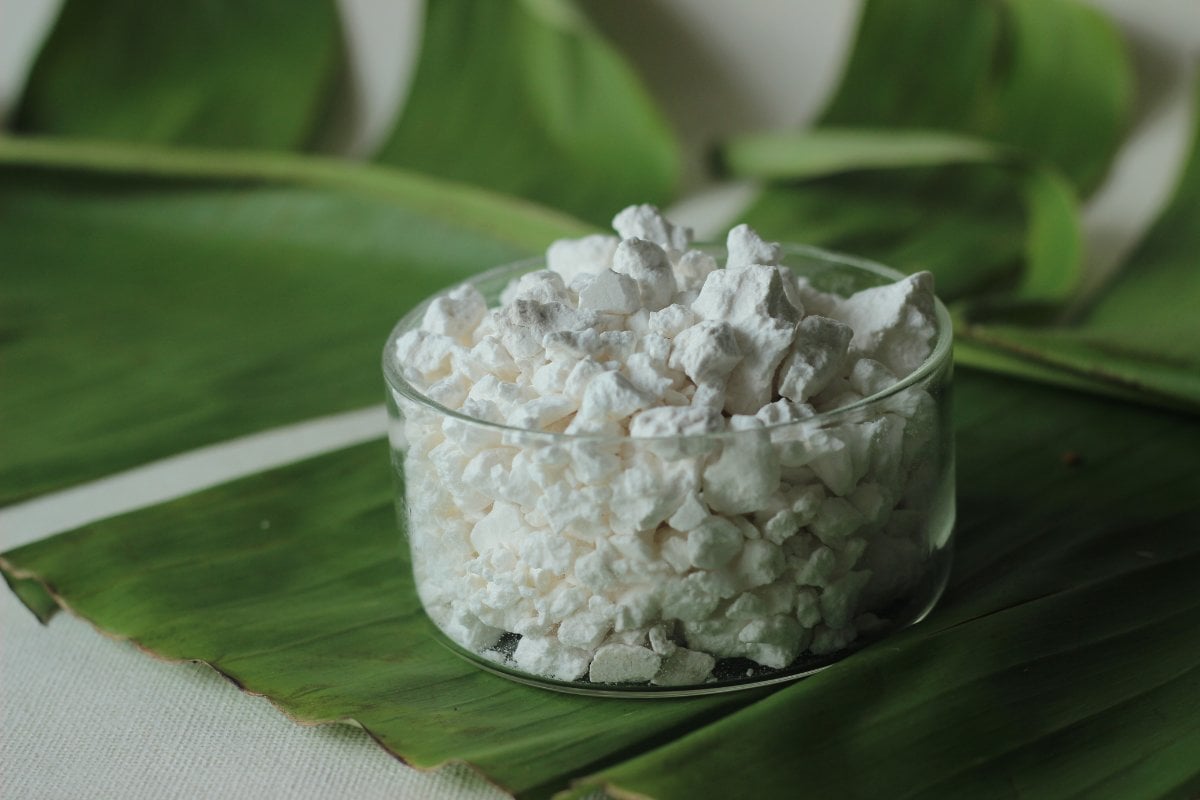
Arrowroot flour is made from the roots of the arrowroot plant. It’s a favored sorghum flour substitute for its light consistency and ability to blend seamlessly with other gluten-free flour. It’s also a versatile ingredient in the kitchen, particularly as a thickening agent for soups, sauces, and various baking recipes.
Arrowroot flour has a fine, powdery quality and imparts a smooth finish to the dishes it’s used in. It’s an excellent choice for those looking to achieve a clear glaze or sauce, as it doesn’t cloud the liquid the way some other flours might.
When substituting arrowroot flour for sorghum flour, it can generally be used in a one-to-one ratio, but due to its lighter texture, some adjustments may be necessary. You might need to experiment with the liquid content of your recipe or combine arrowroot with other flours to attain the desired consistency in your final product.
12. Tapioca Flour

Tapioca flour is a gluten-free flour derived from the cassava root. It’s favored for its light texture and neutral flavor, making it an excellent thickener and a good substitute for sorghum flour. It stands out in gluten-free baking for its binding properties and ability to create a chewy texture in baked goods and a crisp crust in frying applications.
While it lacks the nutritional density of other flours, tapioca flour’s hypoallergenic qualities, and quick thickening ability. It works well as a direct substitute for sorghum flour or in combination with other gluten-free flours to fine-tune the texture of various dishes.
13. Corn Starch
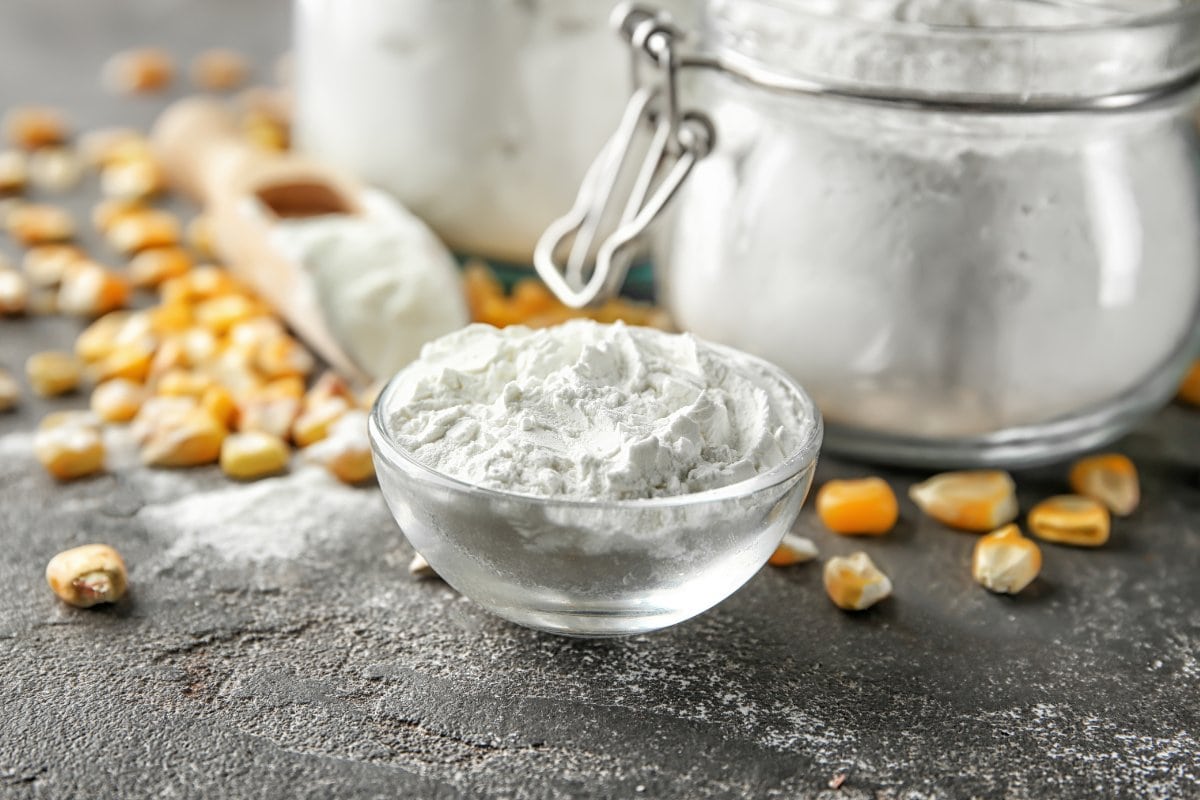
Corn starch is a gluten-free powdery substance derived from the endosperm of corn kernels. It’s commonly used as a thickening agent in cooking and baking, including sauces, gravies, and pie fillings. It’s a popular sorghum flour substitute due to its fine texture and neutral taste.
The key characteristics of corn starch include its high thickening power, which requires less quantity compared to flour. It also can create a glossy finish in sauces and fillings. Corn starch is often used in combination with other gluten-free flour to improve the texture of baked goods.
Sorghum Flour Substitute Uses
Sorghum flour is a versatile gluten-free option, but when it’s unavailable or unsuitable for a recipe, several substitutes can step in. These alternatives can be used across a broad range of culinary applications, ensuring your dishes maintain the desired texture and flavor.
- Thickening soups, sauces, and gravies
- Creating gluten-free sourdough starters
- Baking bread, cakes, and cookies
- Creating a crisp coating for fried foods
- Binding veggie burgers
- Preparing gluten-free pasta and noodles
- Making gluten-free pie crusts and pastries
- Crafting homemade pizza dough
How to Choose the Best Sorghum Flour Substitute
Choosing the best sorghum flour substitute depends on the specific requirements of your recipe and dietary needs. Here are tips to help you select the most suitable alternative:
- Consider the desired texture: There are substitutes best used for a lighter consistency in baking, while others are great for adding moisture.
- Think about the end use: Use xanthan gum or guar gum for binding and elasticity in doughs, and cornstarch for a glossy thickening in sauces.
- Check for allergies: Ensure the substitute meets any dietary restrictions, such as nut or grain sensitivities.
- Flavor preference: Most substitutes are neutral, but some, like coconut flour, impart a distinct taste that may affect the final product.
- Experiment with blends: Often, a combination of gluten-free flours yields the best results, mimicking the properties of sorghum flour more closely.
Tips for Perfect Substitution
Achieving the perfect substitution when replacing sorghum flour requires attention to detail and a bit of know-how. Here are some tips could try in your kitchen:
- Measure accurately: Use a kitchen scale for precision, as different flours have varying densities.
- Start small: Begin with less substitute than the original amount called for, and adjust as needed.
- Consider moisture: Some substitutes absorb more liquid. You may need to tweak the amount of wet ingredients.
- Mix thoroughly: Ensure even distribution of the substitute to avoid textural inconsistencies.
- Test and tweak: Experiment and make several attempts to perfect your recipe with any of these sorghum substitutes.

